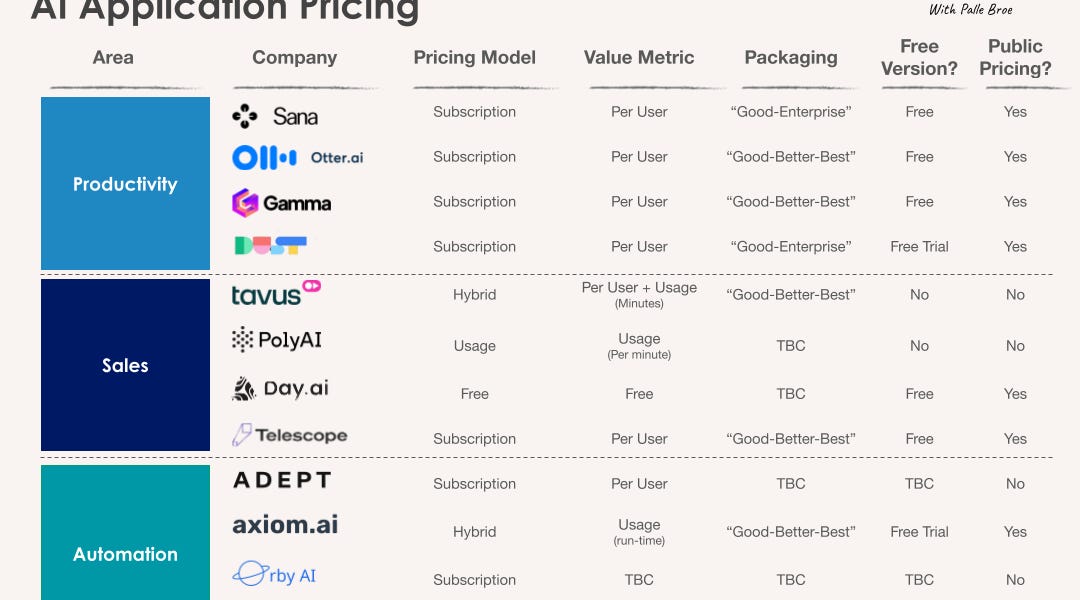How AI apps make money

🌈 Abstract
The article discusses the pricing strategies of 40 leading AI-native startups, including marketing tools, productivity apps, and vertical-specific products. It highlights five key findings:
-
Limited pricing innovation - Most companies (71%) have adopted traditional SaaS subscription pricing models, with few offering pure usage-based or pay-as-you-go pricing.
-
Most companies charge based on the number of users, consistent with the notion of AI apps as "copilots" assisting people rather than digital "workers".
-
Free versions are extremely popular for initial adoption - 50% of companies have a free plan, and another 16% offer a free trial.
-
There is a "Good-Better-Best" paradigm in terms of pricing packages and tiers.
-
Varying degrees of pricing transparency - two-in-three companies have public pricing information on their websites.
🙋 Q&A
[01] Pricing Trends for 40 Leading AI Apps
1. What are the key pricing models used by the 40 AI apps studied?
- The majority (71%) have a traditional SaaS subscription pricing model.
- 26% have a hybrid model with both a subscription cost and a usage fee.
- Only 1 company (3%) has a pure usage-based pricing model.
2. Why is there limited pricing innovation among these AI apps?
- Keeping pricing simple and familiar for buyers is a priority to drive adoption.
- Implementing usage-based pricing is technically challenging for many startups.
- It's still difficult for these companies to quantify the exact value they are delivering.
- Startups are focused on growth over profitability at this stage.
3. What value metrics are these AI apps using?
- The primary value metric is still focused on the number of users or seats.
- Some companies also incorporate usage-based components like credits, characters, minutes of video, etc.
- A per-user model may become less effective as AI replaces human labor over time.
[02] Freemium and Packaging Strategies
1. How prevalent are free versions and trials among these AI apps?
- 47% offer a "forever free" version with limited capabilities.
- 16% offer a free time-bound trial, usually 7-14 days.
- Free versions and trials help drive initial adoption and usage.
2. What packaging strategies are common among these AI apps?
- Most follow a "Good-Better-Best" paradigm with 2-5 tiers.
- Differentiation is often based on product capabilities and usage limits.
- Packaging strategies tend to evolve as the product matures.
[03] Pricing Transparency
1. How transparent are these AI apps about their pricing?
- Around two-thirds of the companies have public pricing information on their websites.
- Transparent pricing is more common for individual/prosumer-focused apps than enterprise-focused ones.
- Enterprise-focused apps often keep pricing hidden for competitive reasons and to maintain flexibility.
</output_format>